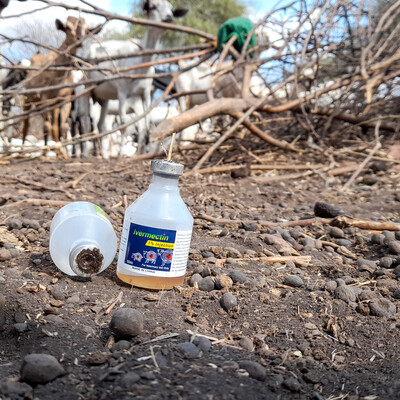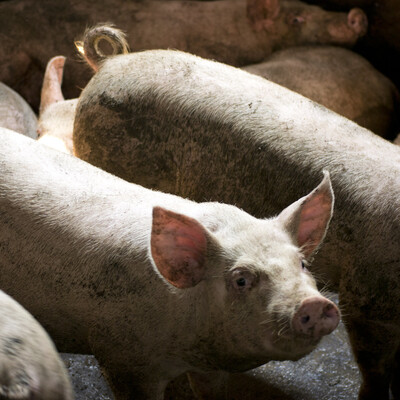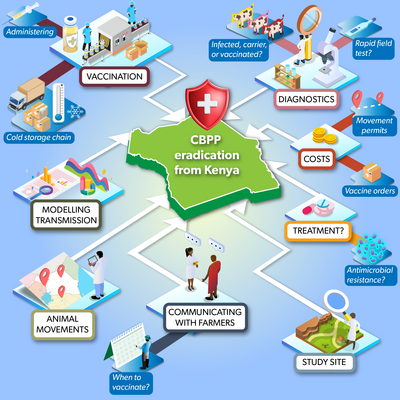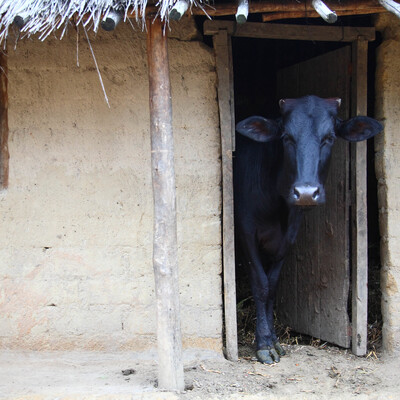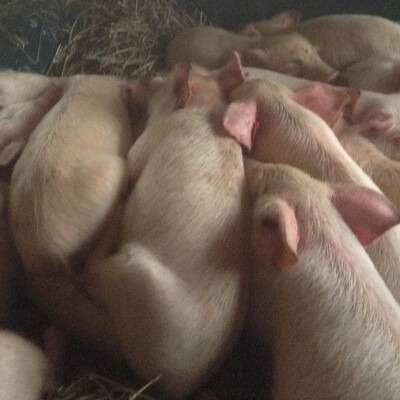

ILRI’s contributions to wildlife research spotlighted at the WRTI’s inaugural Wildlife Scientific Conference
Researching wildlife-livestock-human interactions to better understand zoonotic diseases
The first Wildlife Scientific Conference to be organized by the Wildlife Research Training Institute (WRTI) was attended by the International Livestock Research Institute (ILRI) on 26-28 September in Naivasha, Kenya. ILRI has led a rich legacy of research at the livestock-wildlife-ecosystem interface and while the institute primarily focuses on livestock, its track record of applying interdisciplinary expertise to address One Health challenges has evolved to include communities who are in constant interactions with animals. ILRI’s One Health strategy aims to improve the lives, livelihoods and well-being of people in the global south through collaborative and multi-sectoral research.
ILRI also seeks to safeguard public health, preserve biodiversity, and support sustainable livelihoods in the face of climate-induced health challenges. Climate variability is significantly altering disease patterns, and it is important to understand why and how this is happening. As environmental pressures intensify, urban communities within Kenya are migrating closer to wildlife habitats, which increases contact for humans, livestock and wildlife with disease-causing vectors such as mosquitoes and ticks. ILRI has already undertaken research into the shifting dynamics and geographical distribution of tick populations. With its state-of-the-art facilities for molecular analyses and sequencing, ILRI is strategically positioned to enhance its efforts in combating the surging threat of zoonotic diseases - diseases which spread between animals and humans.
ILRI-led research on wildlife-livestock-human interactions
‘It is increasingly becoming evident that a big proportion of emerging diseases are actually zoonotic in nature,’ explained James Akoko, ILRI post-doctoral scientist.
A co-infection project led by ILRI senior scientist Bernard Bett aimed to generate information that explains how diseases circulate between livestock, humans, and wildlife. It found that the co-occurrence of Brucella bacteria (causing brucellosis), C. burnetii bacteria (causing Q fever) and Rift Valley fever virus (RVFV) antibodies at 24.7% of wildlife species sampled, which is higher than the recently reported 15% co-occurrence in camels. As such, wildlife species could play a significant role in maintaining and transmitting multiple zoonotic pathogens at the same time. This information will be crucial for creating control strategies to minimize the spread of these diseases in the future.
Akoko, who presented the work, stated that ‘emerging zoonotic diseases have links with wildlife, so to control them you need to look at the wildlife-livestock-human ecosystem, as this is where transmission occurs.’
Akoko explained that co-infection is widely recognized as one of the leading drivers of pathogen evolution and epidemiology (research dealing with the incidence, distribution, and control of diseases), with more devastating epidemics being observed in co-infected populations. Despite this, there is a major knowledge gap because most studies have only investigated single infections.
Bett’s team also observed a higher rate of positive tests for Brucella species (33%) and RVFV (20.4%) in the Maasai Mara ecosystem, suggesting an ecology permissive for the transmission of both pathogens. Additionally, wild mammals had the highest exposure rates for all the pathogens. This could indicate higher risk of zoonotic transmission as wild mammal species are predominantly hunted for bushmeat in eastern Africa. Consequently, the research team recommended active surveillance for the three pathogens studied to fully understand their epidemiology in wildlife, and the direction of infection in areas with high counts of livestock-wildlife interactions.
Addressing drivers of bushmeat-value chain
Bushmeat hunting can be a pervasive issue in sub-Saharan Africa for multiple reasons. Poverty, lack of alternative protein sources, and cultural traditions contribute to its persistence. Additionally, poor enforcement of wildlife protection laws and a lack of awareness about the health risks involved make it a challenging issue to tackle. But ILRI scientists say understanding the value chain of bushmeat— from hunting to slaughtering, handling, and consumption— is crucial for assessing disease risks.
Ekta Patel, ILRI scientist and One Health communications coordinator, emphasizes that bushmeat hunting and trading act as hotspots for zoonotic disease transmission. Diseases like Ebola, SARS and anthrax can be spread to humans through contact with animals or animal products, and trade networks can disperse these pathogens across regions, exacerbating public health challenges. Patel's research, which was funded by the CGIAR COVID-19 Hub and the Federal Ministry of Economic Cooperation and Development (BMZ), focused on assessing disease risk perceptions from the bushmeat value chain in rural communities at the border settlements in Kenya and Tanzania where bushmeat hunting is prevalent. Future studies will investigate its impact in urban settings.
Masudi Phyllis Sherril, an ILRI graduate fellow and PhD candidate at Wageningen University and Research, carried out a complementary study. ‘Funded by The Deutsche Gesellschaft für Internationale Zusammenarbeit GmbH (GIZ), our project employs a bushmeat value chains approach to assess the risk of human exposure to pathogens in urban areas of Nairobi, Kenya, and Lagos, Nigeria. The data generated will be instrumental in shaping conservation policies and will further enrich our understanding of the potential hazards associated with bushmeat consumption in urban settings.’
Understanding the complex dynamics of diseases circulating among livestock, humans, and wildlife is crucial to the creation of preventative strategies. ILRI's growing focus in this field, alongside its capacity for high-level laboratory and field research, positions it as a leading institution in addressing the challenges posed by zoonotic diseases and the changing disease patterns influenced by climate variability.
Read More:
- ILRI’s co-infection project on the Rift Valley fever virus: https://www.ilri.org/research/projects/co-infection-rift-valley-fever-virus-brucella-spp-and-coxiella-burnetii-humans
- ILRI study assessing disease risk perceptions of wild meat at the border of Kenya and Tanzania: https://www.ilri.org/news/new-study-assesses-disease-risk-perceptions-wild-meat-border-kenya-and-tanzania
- ILRI wildlife-interface research landing site: https://www.ilri.org/wildlife-research#:~:text=ILRI's%20wildlife%20research%20activities%20which,and%20consumption%20and%20wildlife%20farming.
Photo 1: James Akoko at the first Wildlife Scientific Conference (Credit: ILRI/ Fenja Tramsen)
Photo 2: Infographic Bushmeat perceptions of Tanzania-Kenya border communities (Credit: ILRI/ Annabel Slater)
You may also like
Related Publications

Mastitis in goats: A comprehensive systematic review and meta-analysis of prevalence and the pathogens
- Tibebu, A.
- Teshome, Y.
- Tamrat, H.
- Bahiru, A.
- Yitbarek, T.
- Moliso, Mesfin M.
- Assefa, Ayalew

Review and comprehensive analysis of knowledge, tools, and implementation gaps for the control of contagious bovine pleuropneumonia
- Manso-Silván, L.
- Amanfu, W.
- Apolloni, A.
- Comtet, L.
- Heller, M.
- Muuka, G.M.
- Rafi, L.
- Rich, Karl M.
- Sacchini, F.
- Schieck, Elise
- Totté, P.

Overcoming Newcastle disease in rural family poultry: evaluating vaccine efficacy and field challenges in Burkina Faso
- Ouedraogo, A.
- Dione, Michel M.
- Ouoba, L.B.
- Ilboudo, Guy S.
- Ouedraogo, Brice
- Mungadi, H.U.
- Alders, R.
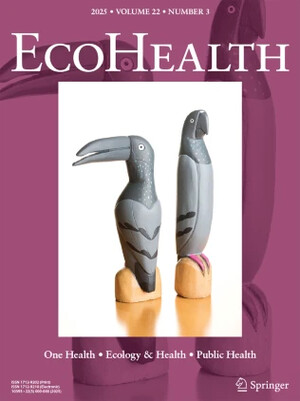
Disease risks for restoring endangered Sahelo-Saharan antelope: A literature review
- Ellis, L.
- Yu, J.H.
- Mertes, K.
- Cox, S.
- Desamours, I.
- Abakar, M.F.
- Pesci, M.E.
- Sikli, L.
- Cook, Elizabeth A.J.
- Zimmerman, D.





